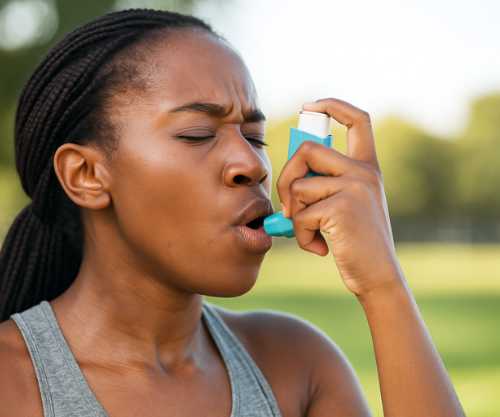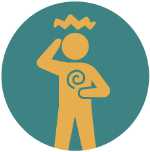Understanding Asthma through
the Lens of Chinese Medicine
Asthma is a chronic respiratory condition that affects over 25 million people in the United States—including more than 5 million children. It’s marked by episodes of wheezing, breathlessness, chest tightness, and coughing. In Western medicine, asthma is understood as an inflammatory disease of the airways, often triggered by allergens, exercise, cold air, or stress. Medications like inhalers help reduce inflammation and open the airways—but they don’t always address the deeper imbalances behind the condition.
 Traditional Chinese Medicine (TCM) approaches asthma from a different angle. Rather than viewing it as a single disease, TCM sees asthma as a pattern of disharmony involving the Lung (Fèi 肺), the Spleen (Pí 脾), and the Kidney (Shèn 肾). Each of these organ systems contributes to healthy breathing—and when one is out of balance, the whole network can suffer.
Traditional Chinese Medicine (TCM) approaches asthma from a different angle. Rather than viewing it as a single disease, TCM sees asthma as a pattern of disharmony involving the Lung (Fèi 肺), the Spleen (Pí 脾), and the Kidney (Shèn 肾). Each of these organ systems contributes to healthy breathing—and when one is out of balance, the whole network can suffer.
In TCM, the Lung governs qi (vital energy) and respiration. When Lung qi is weak or blocked, it becomes difficult to inhale or exhale smoothly. The Kidneys are said to “grasp” the qi and hold it down; when this function is weak—often due to chronic illness or inherited weakness—it results in shortness of breath, especially during exertion. The Spleen plays a role by transforming food into qi; when it’s sluggish, excess phlegm (痰 tán) may accumulate in the lungs, making breathing heavy and labored.
Asthma patterns in TCM may be classified as “cold-type” or “heat-type.” Cold-type asthma tends to show up with clear or white phlegm, chills, and wheezing that improves with warmth. Heat-type asthma often includes yellow phlegm, thirst, irritability, and a rapid pulse. Treatment in TCM aims to restore balance, clear phlegm, strengthen the organs, and improve the body’s ability to adapt.
Herbal formulas like Ma Xing Shi Gan Tang (麻杏石甘汤) or Shen Ge San (参蛤散) have been used for centuries to ease wheezing and cough. Acupuncture can help open the chest, calm the nervous system, and support immune function. Breathing exercises from qigong or taijiquan can gently retrain the lungs and bring more awareness to the breath.
What makes the TCM view of asthma especially valuable is its attention to both the acute symptoms and the underlying terrain. It doesn’t just ask “what triggered this attack?”—it also asks “what is the root imbalance that makes this person susceptible?” That perspective can offer hope and empowerment for those seeking to move beyond symptom management into true healing.
Vocabulary Guide
- Fèi (肺) – Lung; governs breathing and qi circulation
- Pí (脾) – Spleen; transforms food into qi and manages fluids
- Shèn (肾) – Kidney; helps anchor breath and support deep energy
- Qi (气) – Vital energy or life force
- Phlegm (痰 tán) – Pathological fluid often blocking the lungs or channels
- Ma Xing Shi Gan Tang (麻杏石甘汤) – Classical herbal formula to clear Lung heat and ease wheezing
- Shen Ge San (参蛤散) – Traditional formula used to treat phlegm-type asthma
- Qigong (气功) – Energy cultivation exercises combining breath, movement, and awareness
- Taijiquan (太极拳) – Traditional Chinese martial art and health practice with gentle, flowing movements





